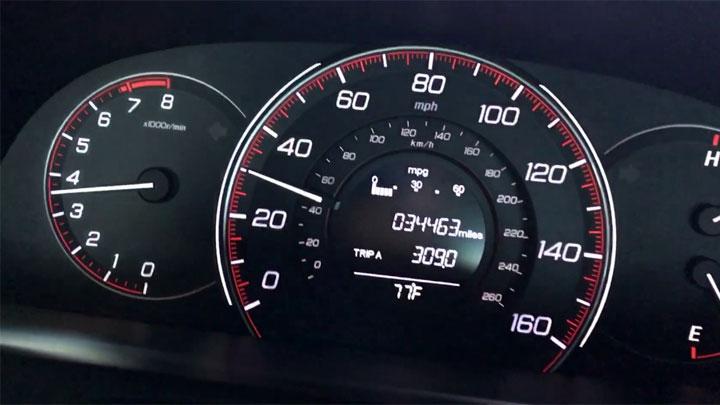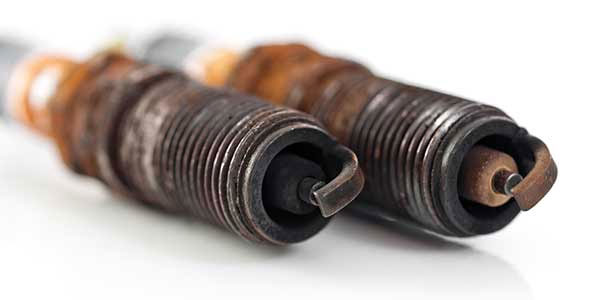6 Symptoms of a Bad Fuel Pressure Regulator (and Replacement Cost)
Fuel injectors receive pressurized fuel from the regulator, spraying the proper amount into combustion chambers. This key component governs both fuel quantity and pressure. But regulators can still fail over time.
In this article, we’ll cover the most common symptoms of a bad fuel pressure regulator and its average replacement costs so you know what to expect.

Read Also: 5 Bad Fuel Tank Pressure Sensor Symptoms
Top 6 Bad Fuel Pressure Regulator Symptoms
A properly functioning fuel pressure regulator is important for consistent, reliable fuel delivery in a vehicle. Without precise regulation of fuel pressure, the delicate combustion process powering the engine falls into disarray.
Below are some of the most common signs of a faulty fuel pressure regulator.
#1 – Engine Misfires / Weak Acceleration

The most obvious symptom of a bad fuel pressure regulator is an engine misfire and loss of acceleration power. You will be driving and then suddenly your vehicle will lose power, stumble, and/or slow down.
Then it may go back to accelerating normally for a short time before losing acceleration power again. This is obviously not something you want to put up with because it can be very dangerous when you’re driving on the road.
#2 – Spark Plugs Covered in Soot

If you suspect that you have a bad fuel pressure regulator, take out a spark plug and see if there is any black soot on the end of it. If there is, then a faulty fuel pressure regulator is a possible cause among other things.
Make sure to check the ends of all other spark plugs for soot as well. This soot is the result of oil burning in the engine’s head. You will need to replace both the fuel pressure regulator and the dirty spark plugs in this case.
#3 – Black Smoke

You should only be seeing a bit of white smoke coming out of your tailpipe if your vehicle is warming up. If you start seeing dark gray or black smoke, the possible cause can be attributed to a bad fuel pressure regulator.
Although there are lots of other reasons why black smoke is coming out of your exhaust, it is likely the regulator’s fault if you notice a combination of other symptoms listed here as well.
Read Also: DTC P0001 (Fuel Volume Control Regulator)
#4 – Fuel Dripping Out of Exhaust

While rare, if your tailpipe is dripping gasoline out of it, then your fuel pressure regulator is probably letting it happen because it has gone bad. A malfunctioning regulator may allow some gasoline to get into the vehicle’s exhaust system. From there, a bit of it may find its way out of the tailpipe along with the exhaust fumes.
Before you suspect this, make sure you simply don’t have water coming out of your exhaust in the form of condensation. In this case, a bit of water is usually completely harmless.
#5 – Vacuum Hose Has Gasoline

One sure way to find out whether you have a bad fuel pressure regulator is to disconnect your vacuum hose from your fuel pressure regulator and see if it has gasoline inside of it. Be sure to do this while your engine is turned off.
If there is gasoline in your vacuum hose, then you have a bad fuel pressure regulator that leaks.
#6 – Engine Won’t Turn Over

If you try to start your vehicle and it won’t start because the engine doesn’t turn over, then your issue is likely a drained car battery or a bad starter motor. But it can also mean something is wrong with your fuel pressure regulator.
Since the regulator is what manages the fuel pressure and fuel is needed when starting a car, naturally, a bad regulator can prevent the engine from starting as it can cause low fuel pressure.
When the fuel pressure regulator first starts going bad, you may be able to start your vehicle after multiple attempts. But if the regulator never gets replaced, it will eventually get to the point where you won’t be able to start your car at all.
How a Fuel Pressure Regulator Works
The driving conditions that your vehicle is under determines how much fuel is required to be sent to the combustion chamber.
In order to get the proper amount of fuel sent, the fuel pressure regulator has mechanical diaphragms that are operated with a vacuum which changes the fuel pressure to the necessary amount for delivering the fuel.
Some new vehicles now have electronic fuel pressure regulators rather than the mechanical ones.
See Also: Symptoms of a Bad Fuel Rail Pressure Sensor
Fuel Pressure Regulator Replacement Cost
Best places to order parts? See: 19 Best Online Auto Parts Stores

The cost to replace a fuel pressure regulator depends on two main things. Is it a standard manual driven regulator or an electronic one? And how hard is it to get to?
In most cases, the part itself will cost you around $50 to $200 but for vehicles with an electronic fuel pressure regulator, you can easily pay double that.
Most of the time, the fuel pressure regulator is located in a fairly easy to access location so time spent replacing it isn’t too much. Expect to pay somewhere in the range of $100 to $150 for labor (more if other components like the fuel rail needs to be removed as well).
All together, the total cost of a fuel pressure regulator will run somewhere between $150 to $350 in most cases but it can easily go above $500 for electronic fuel pressure regulator replacement. To save money, it’s recommended to have an independent mechanic or repair shop do the work versus a dealership.
- Replace the Engine or Replace the Car? (11 Factors to Consider) - Apr 11, 2024
- Plastic Piece Dragging Under Your Car? (What It Is and What To Do) - Mar 21, 2024
- Timing Belt vs Timing Chain (What’s the Difference?) - Feb 27, 2024

Bought a aftermarket fuel pressure regulator and it leaked fuel over the engine bosch is recamended
My 2002 acura T L is cutting out when I give it gas I smell fumes from the tail pipe I just bought the car and it sounded great started right up and drove it around the block no problem it was low on fuel I did not check when I left but I’m fairly sure I got beat and it would not start after I drove to the store came out nothing left it came back it started
Are there any check engine light codes?